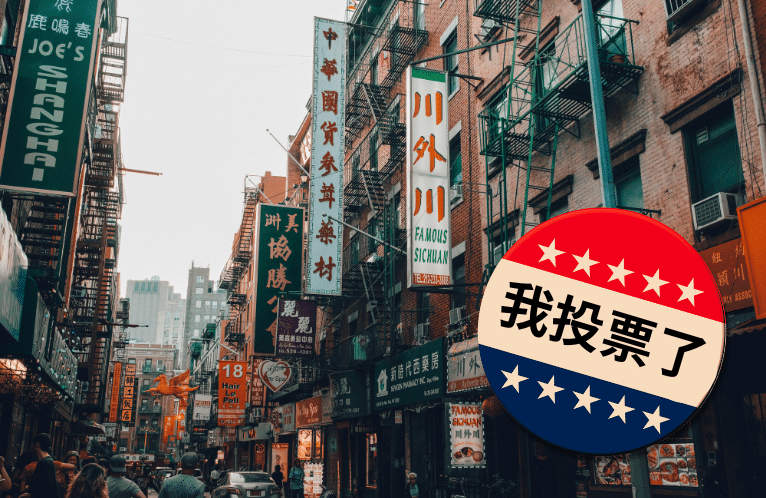The Road to Win Chinese American Voters
- Analysis
 Mallie Prytherch
Mallie Prytherch  Li Cheng
Li Cheng- 09/10/2024
- 1

The swell of support that vice-president Kamala Harris has received since her candidacy announcement is unprecedented in the recent history of U.S. elections. In the first week of her campaign, she raised over USD $200 million, gained 170,000 new volunteers, and garnered enough support that she is now in a statistical tie with former president Donald Trump. It is hard to pinpoint the specific reasons for the overwhelming response to her candidacy, and many simply point to a grassroots “energy” and “enthusiasm” for Harris.
Her rapid ascent has sent shockwaves through both Trump’s campaign and the Republican Party as a whole. And, indeed, behind the overall wave of excitement, there are still deep anxieties within the Democratic Party. Both campaigns have had to make rapid adjustments in strategy with only a little over a month until early voting begins. They also must contend with a lack of data—while there have been many national and swing state head-to-head polls, more granular data, especially that which reflects trends over time or preferences of particular interest groups, is often missing.
There has been an intensified focus on Harris’ Indian roots, especially following remarks by Trump attacking her biracial identity: “Is she Indian? Or is she black?” There has been significantly less discussion regarding voters of non-Indian Asian ethnicity. Based on a recent survey, Japanese, Vietnamese, Korean, and Chinese voters all have lower opinions of Harris than Indian voters. Overall, Asian American voters as a whole shifted away from Biden by 8 points from 2020 to 2024.
Chinese Americans, in particular, are the largest Asian origin group in the U.S. As of the 2021 American Community Survey, Chinese Americans numbered 5.4 million, 24% of the total Asian population. Although most Chinese Americans live in the solidly Democratic states of California and New York, there are also substantial population cores in Nevada and Pennsylvania, two states that either candidate most likely must win if they want to take the White House in November.
It will be a tough battle to win the support of undecided Chinese Americans. In 2016, 24 percent of Chinese Americans voted for Trump, the third highest percentage among Asian Americans. Harris’ net favorability among Chinese Americans is -12, although this number is from before she announced her candidacy. However, Trump enjoys an even lower net favorability from Chinese Americans than Harris, -38 (See Figure 1). Harris also has more space to grow: a full 17% of Chinese American voters say that they do not know who she is or do not know enough about her to have an opinion—only 2% say the same about Trump.
Additionally, when compared to other Asian American subgroups, Chinese Americans are the least likely to identify as Republicans (21%), and most likely to identify as independents (22%). The main issue for the Harris campaign when it comes to Chinese Americans is not that they have shifted to support Trump, but that they are not enthusiastic about her as an option. On the other hand, Trump’s biggest hurdle with this demographic group is winning over the independents that currently view him unfavorably.

Chinese Americans are certainly not a monolith in terms of political views and policy preference, but they are an important constituency that tend to agree on a number of issues that are less often referenced in campaign discourse.
In her recent speech at an event sponsored by the non-partisan organization “Asian and Pacific Islander American Vote,” Harris focused on abortion, expansion of health care, reduction of drug costs, infrastructure development, and a specific project for revitalizing Philadelphia’s Chinatown. But with the exception of health care, these are not the top priorities for Chinese American voters. Rather, Chinese American voters want concrete policies addressing inflation, jobs, and the economy, shoring up Medicare and Social Security, and fighting crime (See Figure 2).

Since Harris has become the nominee, Trump has not gone out of his way to attend Asian-American focused events. However, his policy priorities are outlined on his website (Harris’s are not). Apart from reducing inflation and tackling crime, none of Trump’s top ten priorities match with the top five of Chinese Americans. In both cases, the candidates focus overly on social issues and not enough on the top issue for undecided voters: the economy.
On the more niche side of things, if either candidate wants to gain voters from Asian American communities, they should voice support for three specific policy priorities, all of which were supported by at least 70% of Asian American voters surveyed by AAPI Data earlier this year. First, the teaching of Asian American history in schools (77% support). Second, programs for people of color to get better access to educational opportunities (84% support). Third, stronger legislation to support family caregivers (70% support). The first two priorities would be much easier for Harris to adopt, but either campaign could make a reasonable push for legislation to support caregivers.
There are also some particularly distinct features in the Chinese American community that the two campaigns should take advantage of. A full 17% of Chinese Americans say that they get most of their news from non-English language sources, and another 21% say they use both English and non-English language sources. Chinese Americans are also an under-contacted group; 55% have not been contacted or don’t know if they have been contacted by the Democratic party this cycle, and 61% by the Republican party respectively. Collaboration with Chinese language media outlets, including newspapers, TV stations, and digital platforms, is vital to reach this audience. Additionally, the candidates should not only prioritize bilingual campaign mailers, signs, and literature in areas with high Asian American populations, but also make a push to recruit bilingual poll volunteers, as Limited-English Proficient (LEP) voters tend to have lower turnout.
One key factor that could make a real difference is Harris’ choice of running mate. Tim Walz will likely increase Harris’ support within the Chinese American community—although perhaps not for the reasons imagined. Only four-in-ten Chinese Americans see China in a positive light, and a plurality support U.S. promotion of human rights in China. Walz has both a familiarity with China and a track record of advocating for Chinese dissidents and human rights, an unusually nuanced combination that appeals to many Chinese Americans. Utilizing Walz’ background properly could be key to invigorating subsections of this demographic group.
On the other hand, J.D. Vance does not have an extensive track record on China, mostly due to his short time in politics. However, his rhetoric with regards to China has been focused on economics, which hews closer to voters’ priorities. In a recent speech at the National Conservatism Conference, he said that the U.S. should “not fight a war with China if we can avoid it, we should also not let the Chinese make all of our stuff,” a moderate and pragmatic position that is likely to resonate with economy-focused, socially moderate Chinese American independents.
Considering that the race for president is within the margin of error in almost every reputable poll, securing the presidency may hinge on the ability of the campaigns to effectively reach out to and address the needs of diverse voter demographics, including the Chinese American community. While this is typically done more often by Democrats, Trump has shown an adeptness at energizing previously low-turnout groups. To successfully address the hesitations and stir the enthusiasm of the Chinese American community, both candidates must leverage their understanding of media consumption habits and specific political concerns. Ultimately, these must be channeled into a strategic, data-driven campaign effort to secure the presidency in November.
Mallie Prytherch is a researcher at the Centre on Contemporary China and the World at the University of Hong Kong. Her research areas include Chinese youth, Chinese political narratives, Chinese domestic politics, and US-China relations. She was previously employed at the Brookings Institution in Washington, DC.
Li Cheng is professor of political science and founding director of the Centre on Contemporary China and the World at the University of Hong Kong. Li is the author and editor of 17 books, and his research areas include the transformation of political leaders, the Chinese middle class, technological development in China, and Sino-US relations. Prior to joining HKU, Li served as director and senior fellow at the Brookings Institution’s John L. Thornton China Center.
The authors would like to thank research assistant Junya Liang for her background research for this piece.
The views expressed in this article represent those of the author(s) and not those of The Carter Center.








1 Comment
[…] Road to Win Chinese American Voters”,(点击这里查看英文原文),作者为为 […]